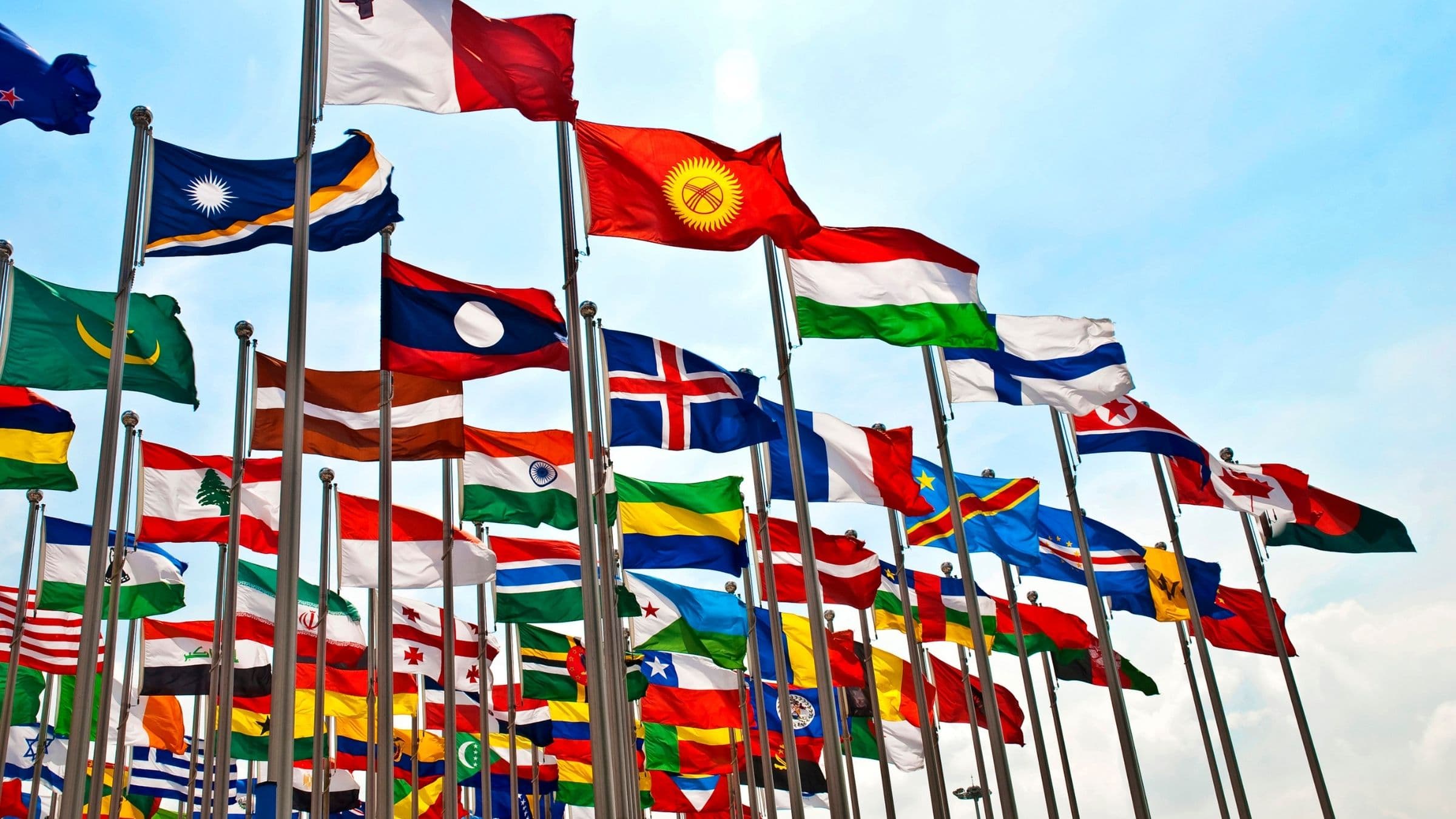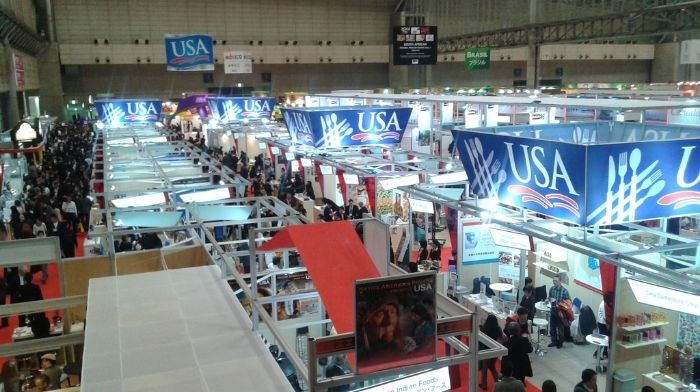
COUNTRY PROFILE
Discover more about the Panama market including overviews about the retail, food service, and food processing sectors. Events, resources, and more are linked throughout the profile.

2nd
largest importer of U.S processed foods in Central America

$482.8 Million
total of U.S. processed foods imports in 2023
Euromonitor reports that the economy in Panama grew in real terms in 2022, driven by rising public and private spending, capital investment, and external demand. In 2023, however, the global economic slowdown, elevated inflation, and tightening financial conditions were set to hamper business and consumer confidence globally, weighing the country’s economic outlook.
Focus Economics reports that Panama Canal activity was curbed by restrictions imposed due to the protracted drought amid the El Niño weather event: In November 2023, traffic fell by over 20% year on year, and toll revenues shrank for the first time in 11 months. Protests that erupted in the fall of 2023 due to environmental and economic concerns over the Cobre Panama copper mine deal also hit activity, causing the mine’s closure and up to US$80 million in lost activity daily.
Panama’s dollar-based economy rests primarily on a well-developed services sector that accounts for more than three-quarters of GDP. Services include operating the Panama Canal, logistics, banking, the Colon Free Trade Zone, insurance, container ports, flagship registry, and tourism. Additionally, Panama is a center for offshore banking. Panama’s transportation and logistics services sectors, along with infrastructure development projects, have boosted economic growth, and the U.S.-Panama Trade Promotion Agreement (USPTPA) was approved by Congress, signed into law in October 2011, and entered into force in October 2012.
Panama recognizes the clear link between free trade and competitiveness and seeks to join an elite group of countries that have achieved growth and development through trade. Panama has full FTAs that cover goods and services in force with the following countries or economies: El Salvador, Singapore, Chile, Costa Rica, Honduras, Guatemala, Nicaragua, Peru, the United States, Canada, the European Free Trade Area (EFTA) countries, Mexico, South Korea, and Israel. Panama has partial trade agreements with the Dominican Republic and Cuba. In 2013, Panama and Colombia signed a free trade agreement, the culmination of three years of negotiations between both countries.
USDA’s Office of Agricultural Affairs, OAA, in Panama City, hereinafter referred to as
FAS Post Panama City, reports Panama is an attractive market for exporting U.S. agricultural food products. With a 2023 population of 4.4 million (CIA World Factbook Estimate) its culturally diverse population, geographical location, and love for American food and culture provide for increasing export opportunities for U.S. high value food and beverage products. Panama has an ambitious public infrastructure plan and an expanding services sector that benefits from the country’s emerging role as a regional hub for trade.
Panama is the second largest export market in Central America for processed food products from the U.S., importing US$546 million in 2022, growth of 19%. In 2023, U.S. processed food exports to Panama dropped 12% to US$482.8 million. This equates to US$64 million in losses which adds to the U.S. trade deficit in food and agricultural products.
Top processed food exports to Panama in 2023 included:

$3.5 Billion
estimated total of retail sales of packaged food products in 2023

32.5%
increase of retail sales of packaged food products since 2019.

$4.7 Billion
estimated growth in sales of packaged food products by 2028
Euromonitor has estimated that the retail sales of packaged food products in Panama reached just over US$3.5 billion in 2023. This also represents an increase of US$866.4 million or 32.5% from 2019. Euromonitor also forecast the packaged food market to grow to US$4.7 billion by 2028, an increase of US$1 billion and 27.1% from 2024.
High growth categories in the forecast include:
FAS Post Panama City reports that supermarkets, hypermarkets, and independent food stores dominate the grocery sector in Panama. Supermarket chains are opening new stores in populated areas across the country and offering online grocery shopping and delivery services. There are more store brands in these chains and the brands allow retailers to offer customers more choice. High-end and specialty retail outlets continue to grow. Independent grocery and convenience stores are also opening stores in local neighborhoods.
Today’s supermarkets can offer reduced consumer prices relative to traditional, family-owned retail. Supermarkets exhibit increasing product safety and diversity, and robust e-commerce platforms with delivery services exist within the supermarket chains and specialty stores: Super 99, Supermercado Rey, Super Xtra, Riba Smith, Machetazo, El Fuerte, Jumbo market, Super Kosher, Felipe Motta, Organica Store, Foodie Market, Pretelt Gourmet Meats, among others.
There are approximately 11,000 independent grocery and convenience stores in Panama. There are also mini-convenience stores that are conventionally sized stores with expanded foodservice, as well as hyper-convenience stores with an extensive variety of product offerings and in-store seating for foodservice. Pharmacies have leveraged their small size, convenient locations, and proximity to consumers to offer more consumer-oriented products such as canned and dry food, snacks, dairy, ethnic specialties, wine, beer, and pet food.
Sabor USA plays an important role in the promotion of U.S. consumer-oriented products in Panama. With a complete digital platform, Sabor USA works with over 40 U.S. trade associations targeting the end consumer and a growing list of U.S. brands and Panamanian importers, distributors, and retailers. The platform develops creative content under #UnidosPorLosSabores (United by flavor), typically utilizing local talent from the culinary and food influencers fields to connect and promote U.S. brands.
The U.S. faces stiff competition from other food exporting countries. In addition to the U.S., Panama has free trade agreements with Canada, the European Union, Mexico, Colombia, Peru, Guatemala, Costa Rica, Chile, El Salvador, Honduras, Nicaragua, Dominican Republic, Singapore, Israel, Iceland, Liechtenstein, Norway, and Switzerland.
FAS Post Panama City reports that high growth categories for U.S. processed food products include snacks, processed meats, seafood, sauces, and condiments, processed fruits, vegetables, and dairy products. Competition is based primarily on price and convenience.
In recent years, the consumption of more convenience and healthy foods has been a trend that resulted in good prospects for U.S. food exports. These include categories like low fat, low sodium, gluten free, and sugar free, Keto, fresh fruits (such as apples, grapes, peaches, and pears), organic foods, processed fruits (especially canned fruits). Processed canned vegetables (especially canned mixed vegetables, yellow sweet corn, peas, mushrooms, and garbanzo beans), snack foods (including corn chips, popcorn, cookies, candy, and frozen processed products (pizzas and ready-to-eat food) also have high import demand.
FAS Post Panama City reports that the increased flow of tourists from January to July 2023 with a total of 1,531,641 visitors was an indicator of excellent market opportunities for U.S. exporters of food and beverages bound for Panama’s hotel, restaurant, and institutional (HRI) sector. The increase of international visitors is from the following regions: 34.6% from North America, 21.4% Antilles 72.9% Oceania, 15.8% Africa, 20.9% Europe, 14.2% Central America, 46.6% Asia, 13.2% South America. Panama is rebuilding the sector through innovation, digitization, sustainability, and partnerships.
International foodservice operators and local companies such as Sysco, H.T. Tzanetatos, Proserv, Procesadora Monte Azul, Dicarina, and others have been serving the foodservice sector for more than 50 years, providing imports of U.S. food and beverages, logistics in warehousing/transportation, and product sales and marketing. With these institutions and facilities, fueling both local and international cuisines, Panama’s foodservice industry is among the strongest in the country. In fact, fast food franchises, cafes, bars, bakeries, ice cream shops, family-owned restaurants, food trucks, street side vendors, convenience stores, and catering services all benefit from this strong trade framework.
Panama is receptive to U.S. style franchising and the market for specific and general franchising opportunities is attractive. Recreation, entertainment services, fast food, automotive, hotel and motel franchises are readily marketable as the local market demands better facilities and services. The U.S. Embassy recommends consulting a local attorney for details on how to set up a franchise in Panama. Some examples of common U.S. food and beverage franchised found in the market include Krispy Kreme, McDonald’s, Starbucks, Olive Garden, Pinkberry, KFC, Burger King, Domino’s Pizza, Pizza Hut, Taco Bell, Carl’s Jr., Papa Johns, Applebee’s, and IHOP.
Restaurants in Panama City are well-developed and feature highly ranked world-class chefs in international cuisine. Due to expanding tourism, growing immigration, and higher consumer purchasing power, the selection of restaurants and international cuisine is expected to continue to grow. Currently, the Panamanian Restaurant Association and related business (ARAP) have more than 400 active members.
The travel and tourism sector are an engine of economic development and a vehicle for sharing cultures. Many factors influence the flow of travelers visiting the country. Panama is an attractive destination, and its dollarized currency is strength. U.S. and international hotel chains’ presence in Panama include the Waldorf, Hilton, Marriott and J.W. Marriott, Bristol, Country Inn, Sheraton, Radisson, Holiday Inn, Intercontinental, Riu, Westin, Wyndham Garden, Novotel, Hotel Las Americas Golden Tower, and Tryp Hotel. Panamanian hotels and resorts primarily procure food and beverages from foodservice companies and/or directly from distributors, supermarkets, and restaurants.
Panama’s cruise ship market is expanding from both the U.S. and Europe as Panama continues to grow as a premier travel destination. Cruise ships to Panama City anchor either at Fuerte Amador and Balboa located at Panama Canal’s Pacific Ocean entrance, or Port Colon 2000 in the Caribbean. From January through July 2023, total visitors by port of entrance through the cruise ports was 233,809 passengers.
FAS Post Panama City reports that high value products offer good market opportunities in Panama, especially ready-made or convenience food, wholesome and healthy products. A list of favorite imports from the HRI sector includes beer, wine and spirits, condiments and food ingredients, pre-cooked potatoes, snacks, frozen or ready-made food, seafood, cheese, vegetable oil, frozen vegetables, ready to eat single meals and rice, pasta, and noodles.

12%
growth of the food processing industry

35%
of total exports come from the United States
FAS Post Panama City report that it is primarily a service-based economy, but food processing is one of its top industries. With 150 food-processing companies which include dairy processors, meat, poultry, fishery, fruits, beverages and spirits, bakery, and snacks, among others. The dynamic culinary culture combines with strong tourism and processing industries mean significant business opportunities for U.S.-origin ingredient suppliers. Its geographical proximity and cultural ties to the United States continue to drive a strong preference for U.S.-origin products. The food processing industry experienced 12% growth over the last few years due to increases in local food processing facilities, tourism, and foreigners relocating to Panama.
Large multinational companies have a competitive advantage over smaller domestic producers in certain product categories such as frozen foods, soups, specialty canned and preserved products, and well-known condiments and flavors that cater to the international pallet. Because of this, companies able to meet the demands of this competitive processed food sector must have the means to invest in technology and innovation to not only meet consumer demands but also maintain low, competitive prices. 
Panama’s main trading partner is the U.S. in the food processing industry. As an example, in the category of miscellaneous edible preparations, exports to Panama from the United States accounts for 35% of total imports of these products. Overall, 75% of these imports into Panama are from the U.S., Costa Rica, and Mexico.
FAS Post Panama City reports that the Panamanian market offers good export opportunities in the food processing sector for additives, preservatives, flavorings, vegetable colorings, sauces and condiments, grains (wheat, yellow corn, and rice), vegetable and soybean oils and sweeteners and beverage bases, soybean meal, food preparations, dairy products, and pork & pork products.
